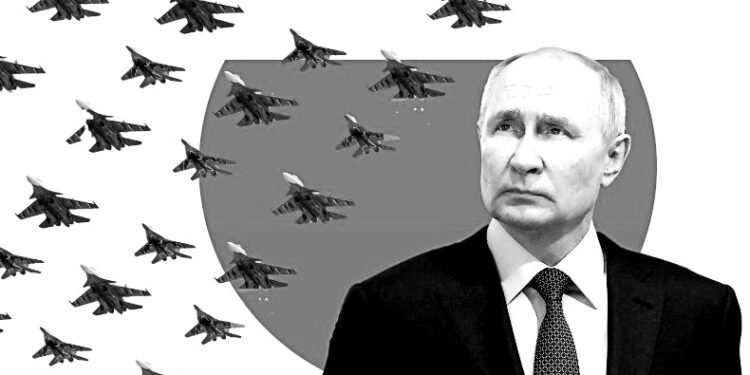ussia’s Air Force may have performed poorly at the start of the war in Ukraine, but intelligence leaks last month showed United States nerves about the prospect of Vladimir Putin returning to the sky to change what’s happening on the ground.
The Pentagon document dated February 28 said that missiles for Soviet-era S-300 and Buk air defense mid to long-range systems, which Ukraine relied on early on to target aircraft, cruise missiles and ballistic missiles, could be fully depleted by this month.
Ukrainian air defense has been weakened by Moscow’s constant attacks on infrastructure with cruise missiles launched from within Russian territory and barrages of Iranian-made kamikaze drones.
Putin may have shelved the assets of his country’s air force but it is still the world’s second-largest and includes approximately 900 fighter jets and 120 bombers, which is a significant ace to hold ahead of the widely anticipated Ukrainian counteroffensive.
The Russians “have an almost overwhelming level of air superiority they have not introduced into the war yet,” Dale Buckner, CEO of international security firm Global Guardian, told Newsweek. “Russia has in reserve a very large fleet 10 times” that of Ukraine.
He said that the Mikoyan Mig-35, the Sukhoi SU-35 and the Sukhoi SU-57 are part of a modern kit “that could decimate that counteroffensive” if it included large columns of Ukrainian tanks and armored personnel vehicles without adequate air coverage.
“So there’s a real tactical risk on the ground for the Ukrainians if they don’t have proper air defense and if they don’t have multiple layers of air defense,” Buckner added, referring to how different types of weapons intercept aircraft and missiles flying at different altitudes.
Pentagon officials say Ukraine could be under threat, especially if Russian planes get freer rein to attack troop positions and essential artillery targets on the ground and allow Putin to use his fighter jets to change the course of the war.
An analysis last month by Mark Cancian, senior advisor at the Center for Strategic and International Studies (CSIS), noted that Ukraine will be able to defend its military forces with its remaining air defenses but not its cities or infrastructure.
Cancian told Newsweek that so far Russia has been risk-averse in the air and so he did not expect Russia to roam Ukrainian skies imminently. However, “as the Ukrainians run low on missiles, they’re not going to be able to shoot down every cruise missile or kamikaze drone that comes over.”
“Longer term, if the Ukrainians don’t get more air defense assets, then I think that gradually the Russians will be able to use their air superiority and get an increasing advantage,” he said.
Although, “it’s going to be quite a while before they’re comfortable overflying Ukraine and the Russians just don’t have that many cruise missiles so I think it will take some time.”

‘Cat and Mouse’ Next Phase
The Biden administration announced in April it would send additional air defense interceptors and munitions as part of a $2.6 billion aid package to Ukraine, part of which will help Kyiv’s counteroffensive preparations.
Meanwhile, NATO has sent small numbers of medium-range systems ideal for defending Ukrainian cities and critical infrastructure. These include the SAMP/T and the NATO Hawk, although only in small numbers, according to Cancian’s analysis.
In November, Ukraine received the first shipment of the National Advanced Surface-To-Air Missile System (NASAMS) but while there is a large number of available missiles, there are only two launchers.
Ukraine is receiving four Patriot batteries but the $4 million price tag each missile carries makes them unsuitable for defending against inexpensive drones, which have wreaked havoc on Ukrainian cities.
Source: Newsweek











Recent Comments